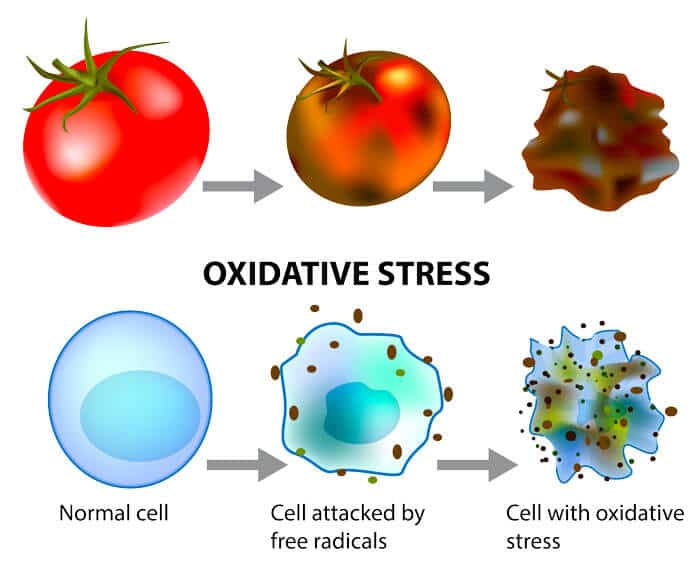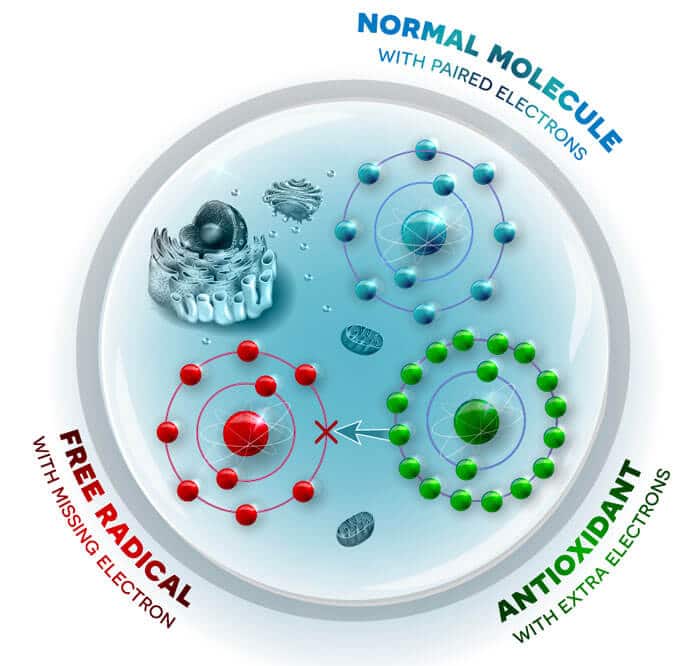The Oxidative Stress challenge
Oxidative stress is characterized by a breakdown in the cellular balance between oxidants and antioxidants which leads to premature aging and the development of various diseases

What is Oxidative Stress?

The oxidative stress corresponds to an imbalance between the production of free radicals and the ability of the antioxidants to inhibit these toxic compounds before they cause cell damages. Therefore, we get an imbalance between anti-oxidants and pro-oxidants in favour of oxidants.
This oxidative stress is responsible for many pathology such as cell senescence, various cancers, Alzheimer’s and Parkinson’s diseases, and many others… For that reason the professionals of various fields such as the food-process industry, the medical and the pharmaceutical are always looking for new antioxidizing molecules which can reduce the oxidative stress effects.
Many studies acknowledge the implication of the oxidative stress into damaged cells whether it be at the DNA, membrane lipids or proteins. For example, during the process of lipid peroxidation this is characterized by three steps: initiation, propagation and termination, there is an overproduction and an accumulation of hydroperoxide into the cell. The concentration in hydroperoxide might serve as an indicator on oxidizing damaged of the cell or a biological tissue.
Another example shows that a skin in state of oxidative stress will cause damage in cellular proteins of the connective tissue, such as the collagen and elastin, which could lead to aesthetic defects on the skin, including wrinkles. The oxidative stress is directly linked to the skin’s ageing process, but also in the development of various pathologies, including the carcinogenesis process.
However, into matrixes the antioxidants act as a protection system which fights against free radicals action. We distinguish between two main antioxidant categories: those which are enzymatic, for example superoxide dismutase, catalase, peroxidase, glutathione peroxidase… And, on the contrary, whose which are non-enzymatic antioxidants like ascorbic acid, glutathione, sulphur-containing amino acids, uric acid, bilirubin, adrenaline, vitamins A and E…
It’s for their benefits that much food, cosmetic or indeed medicine products are enriched in antioxidants (example: vitamins C, flavonoids…). Laboratories are moving all around the world to discover new molecules with antioxidant properties in order to improve their products for the consumer.
An antioxidant-rich diet and a healthy lifestyle can fix the oxidative stress , thus avoiding various dysfunctions or pathologies linked to this stress.
What are free radicals?
Free radicals are the byproducts of respiration and metabolism. It is the unstable complexes that cause the oxidation reaction, which leads to the health of cells and tissues in our body and causes their premature aging.
The most common examples of free radical activity are rust-eaten metal, obsolete fruit, yellow butter.
In the same way that metal is covered with rust due to the oxidation process, our body also undergoes the same mode of operation.
The process of the oxidation of our organism is the main cause of our premature aging.
What are the signs of oxidative stress for humans?
In order to have an idea about its state of oxidative stress, it is necessary to go through an evaluation of the antioxidant / oxidant balance, in order to offer an adapted treatment if possible. However, not all individuals react in the same way when they are in a state of oxidative stress. Each individual has his own antioxidant potential, depending on his genetic characteristics, his lifestyle and the environment in which he lives.
At what point should we take stock of oxidative stress?
To prevent certain pathologies linked to oxidative stress such as cancer, diabetes, heart disease, Alzheimer’s, etc.
When the organism has undergone stressful episodes (surgical operations, radical changes in the environment, etc.)
In order to make a follow-up by oxidative stress during a prescribed treatment, thus allowing appropriate care
How often should we check our oxidative stress?
In the case of an initial abnormal assessment, it is advisable to follow up monthly to check the effectiveness of the treatment.
In other cases (absence of pathology), a half-yearly or even annual follow-up assessment is sufficient to diagnose oxidative stress and the treatment

